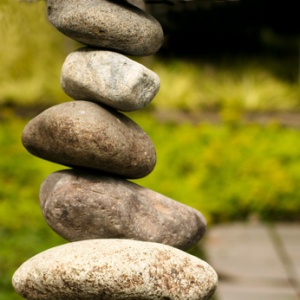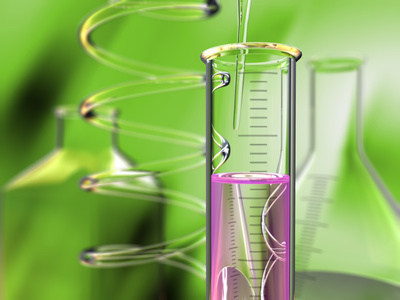 When you’re a chiropractor, what does it mean to “take your own medicine” ?
When you’re a chiropractor, what does it mean to “take your own medicine” ?
“Walking my own talk” consists of more than just making sure I receive chiropractic care myself. It’s about seeking balance in all areas of health. With balance in sight, the need for professional treatment decreases.
My motivation is maybe a bit more intensely fueled than for most people because my body is my essential work tool. If mechanical, biochemical or emotional balance is off, it directly affects the ability to fulfill my commitment to patients which in turn could potentially risk my livelihood. This is an intense interdependence that I would never trade for anything but it can be more than stressful to be even just a little bit laid-up.
In last week’s post I alluded to a recently renewed return to health by restoring balance to my own life, after a year of pushing to get my book out, followed by the release and adventures in promotion.
 I cannot emphasize enough how much this pursuit of balance can differ from person to person. I am taking a moment to briefly outline what this looked like for me at this particular juncture, to give you a very general idea of the factors to consider when thinking about your own balance in wellness. In particular I want to illustrate some of the principles outlined in my book (Every Body’s Guide to Everyday Pain, Volume One – Put Out the Fire). Don’t wait until you’re in pain to find your true healthy balance. The everyday variety of pain is always a sign that something has fallen by the wayside in one of the three main categories (mechanical, biochemical or emotional) but things can be “off” long before pain strikes.
I cannot emphasize enough how much this pursuit of balance can differ from person to person. I am taking a moment to briefly outline what this looked like for me at this particular juncture, to give you a very general idea of the factors to consider when thinking about your own balance in wellness. In particular I want to illustrate some of the principles outlined in my book (Every Body’s Guide to Everyday Pain, Volume One – Put Out the Fire). Don’t wait until you’re in pain to find your true healthy balance. The everyday variety of pain is always a sign that something has fallen by the wayside in one of the three main categories (mechanical, biochemical or emotional) but things can be “off” long before pain strikes.
In my case, this time I needed first to focus on returning to a more regimented sleep/wake schedule. I’ve learned that my body and mind operate optimally with 6,1/2 – 7 hours of sleep per night and this means I need to exercise a little discipline about getting to bed on time because I am not willing to get up late. The morning hours are treasured time and important to my emotional well-being. I’m very lucky to have good sleep hygiene and my body cooperates well when put to bed. For times when that’s not the case (as everything ebbs and flows), I reach for homeopathic remedies, herbal teas or magnesium to calm the nervous system before bed. A controversial trick that isn’t advisable for everyone but that works well for me, is to have a small bite to eat before bedtime as well.
 Re-balancing my biochemistry is something that I dedicated the better part of two consecutive months to. Resetting my organ systems and aiding the natural detoxification, involved some herbal and food therapy. I returned to eating simply by avoiding my known sensitivities: dairy, all animal protein, simple starches (sugar), nightshades and a few other specifics that I’ve come to recognize over the years as taxing to my system. I’ve since then slowly returned to more variety based on what my appetite dictates.
Re-balancing my biochemistry is something that I dedicated the better part of two consecutive months to. Resetting my organ systems and aiding the natural detoxification, involved some herbal and food therapy. I returned to eating simply by avoiding my known sensitivities: dairy, all animal protein, simple starches (sugar), nightshades and a few other specifics that I’ve come to recognize over the years as taxing to my system. I’ve since then slowly returned to more variety based on what my appetite dictates.
 Some signs that will tell you about your sensitivities can be as subtle as an increase in heart rate within 1/2 hour of eating. Sometimes it’s just a little tickle in the back of the throat that passes quickly but is still a significant sign of intolerance. Other times it can be a generalized increase in mucous production and that might be harder to spot. The need to clear your throat or blow your nose in the morning might be signs of excess mucous production in response to a food trigger from the day before. The point is that foods (sometimes very delicious food), not overtly considered as “allergenic” like peanuts, can still be considered by your body as a burden for your biochemistry. So, it’s always important to pay attention to subtle reactions.
Some signs that will tell you about your sensitivities can be as subtle as an increase in heart rate within 1/2 hour of eating. Sometimes it’s just a little tickle in the back of the throat that passes quickly but is still a significant sign of intolerance. Other times it can be a generalized increase in mucous production and that might be harder to spot. The need to clear your throat or blow your nose in the morning might be signs of excess mucous production in response to a food trigger from the day before. The point is that foods (sometimes very delicious food), not overtly considered as “allergenic” like peanuts, can still be considered by your body as a burden for your biochemistry. So, it’s always important to pay attention to subtle reactions.
When I commit to helping my body unload excess waste, I also utilize dry sauna sweats, infrared if possible and pay extra attention to optimizing kidney and bowel function. This makes a big difference in the associated discomfort of “detox”-related headaches and body aches that can happen when large amounts of waste are mobilized throughout the body for elimination.
My herbal and nutrient based regimen was also targeted, in part to facilitate elimination via the kidneys, liver and colon. There are many different philosophies on which herbs are most appropriate and this is something that is best done with the advice of a natural health care doctor. Focusing on aiding natural elimination is the best way to help decrease your body’s chemical burden from exposure to complex molecules in our air, food and water.
 For me, restoring mechanical balance can’t happen without first adequate rest and attention to nutrition. After re-setting sleep and nutrition I found my energy returning and started to increase activity based on that, but not until then. If fuel or rest and recovery are lacking, then the exercise output ends up adding stress to the system instead of strengthening it. This is why sleep and nutrient intake is first priority. It sets the stage for successful return to exercise. Without this in place, workouts are pointless and counterproductive, potentially resulting in inflammation-causing stress.
For me, restoring mechanical balance can’t happen without first adequate rest and attention to nutrition. After re-setting sleep and nutrition I found my energy returning and started to increase activity based on that, but not until then. If fuel or rest and recovery are lacking, then the exercise output ends up adding stress to the system instead of strengthening it. This is why sleep and nutrient intake is first priority. It sets the stage for successful return to exercise. Without this in place, workouts are pointless and counterproductive, potentially resulting in inflammation-causing stress.
 What my body and mind are willing and able to do changes with the seasons, years and stages in life. This Spring, yoga was the doorway back to physical empowerment. It helped me begin to feel able to return to swimming and weightlifting. Now, my routine includes one yoga class per week and two other days of gym workouts which consist of a warm-up swim followed by an upper body or lower body weight resistance workout. That’s three days a week of 1-2 hours of exercise. They are strategically spaced from my days with patients so that I am not too sore to be effective in the office, but also to avoid muscle fatigue related injuries.
What my body and mind are willing and able to do changes with the seasons, years and stages in life. This Spring, yoga was the doorway back to physical empowerment. It helped me begin to feel able to return to swimming and weightlifting. Now, my routine includes one yoga class per week and two other days of gym workouts which consist of a warm-up swim followed by an upper body or lower body weight resistance workout. That’s three days a week of 1-2 hours of exercise. They are strategically spaced from my days with patients so that I am not too sore to be effective in the office, but also to avoid muscle fatigue related injuries.
There’s nothing rigorous about this current exercise schedule which is what makes it completely sustainable. When starting a new routine, being consistent is more important than making a huge impact. Come wintertime, it’s possible that my needs will change and I will change my exercise accordingly. Perhaps in a future post I will take some time to address the how of tuning in to your own changing needs from season to season or depending on life and work situations. It’s mostly a lifelong process of trial and error.
It can be tricky to walk the fine line between the intended exertion of exercise and inescapable demands of work life. But as you slowly increase physical activity, what always holds true is that you increase your body’s capacity for emotional, chemical and physical stress to keep from rebounding into exhausted inactivity. It must be done in a loving way. Self-care routines are best implemented with gentle caring instead of harsh reprimands. If you’re someone who thrives on hard line tactics for motivation – find a trainer or someone outside of yourself to play that role.
Even though it’s not an easy daily practice for many, being loving and yes even permissive with yourself makes room for healthy choices. Remember real health can and does exist in imperfect bodies everywhere. It’s about balance, not perfection.
 Lastly, you should know that it takes at least two full months – often three months – of consistent activity in order to surpass the “transition reaction” of new exercise. When introducing a change in routine or physical demands, the brain and body will express themselves by exhibiting physical sensations that aren’t always 100% comfortable.
Lastly, you should know that it takes at least two full months – often three months – of consistent activity in order to surpass the “transition reaction” of new exercise. When introducing a change in routine or physical demands, the brain and body will express themselves by exhibiting physical sensations that aren’t always 100% comfortable.
Sometimes the transition to a better balance in life includes re-visiting old pain that might feel like re-injury as we work to strengthen around these old vulnerabilities. This is why it’s important to line up some outside help during these transitions either via massage, acupuncture, or chiropractic. It’s the time when I see the greatest need for support in my patients.
Food for thought while you consider your own healthy balancing act: When we act in reaction or opposition to an idea or a feeling, we set the stage for inevitable failure. When we act out of caring and acceptance for the imperfection that is, we make good and sustainable choices.
Image Credits: Wikimedia Commons, Fotolia
Save
Save
Save
Save
Save
Save
Save
Save
Save
Save
Save
Save
Save
Save
Save
Save
 It’s a shame that we have come to accept a world where there is such a thing as “everyday” pain, “everyday” disease and “everyday” toxic exposure and that is simply our current reality. But with the help of The Toxin Solution, I believe we can find a new reality.
It’s a shame that we have come to accept a world where there is such a thing as “everyday” pain, “everyday” disease and “everyday” toxic exposure and that is simply our current reality. But with the help of The Toxin Solution, I believe we can find a new reality.



















